
Guests
- Jumaane WilliamsNew York City public advocate.
- Anisah Saburactivist, the HALT Solitary Campaign.
- Jullian Harris-Calvinformer public defender and director of the Greater Justice New York program at the Vera Institute of Justice.
We take an in-depth look at the growing humanitarian crisis at the world’s largest jail complex, Rikers Island in New York City. After touring the jail, New York City Public Advocate Jumaane Williams describes it as “a disaster.” In response to mounting public pressure, most of the women and transgender people at Rikers are being transferred to two prisons, including a maximum-security facility, even as most are still awaiting trial. “It’s like putting a Band-Aid on a gunshot wound,” says Anisah Sabur, who was formerly incarcerated at Rikers and one of the prisons and is now a leader with the HALT Solitary Campaign. Prosecutors and judges “hold the keys to Rikers,” notes Jullian Harris-Calvin, director of the Greater Justice New York program at the Vera Institute of Justice, who says they must be pressured to continue bail reform and not fall prey to misconceptions about crime rates, and instead adopt measures to adequately address public safety. “We need to make bail affordable or just release them,” Harris-Calvin says.
Transcript
AMY GOODMAN: This is Democracy Now!, democracynow.org, The War and Peace Report. I’m Amy Goodman, as we turn now to the humanitarian crisis unfolding in the world’s largest jail complex, which is located right here in New York City, one of the world’s richest cities. It’s on an island in the middle of the East River between Queens and the Bronx. Most of the 5,700 people in the city’s jails are held at Rikers Island. Most of them are awaiting trial. Amid skyrocketing violence, staffing shortages, chronic medical neglect, some are calling Rikers a “death trap.” So far this year, 12 people have died at Rikers and the city’s jails — the most since 2016 — including five suicides: Wilson Diaz-Guzman, Javier Velasco, Tomas Carlo Camacho, Brandon Rodriguez, Segundo Guallpa, Thomas Braunson III, Richard Blake, Jose Mejia Martinez, Robert Jackson, Esias Johnson, Karim Isaabdul and Stephen Khadu. Last month, more than a dozen elected officials visited Rikers Island following reports of worsening conditions. This is New York Assemblymember Jessica González-Rojas speaking after touring Rikers.
ASSEMBLYMEMBER JESSICA GONZÁLEZ-ROJAS: I am admittedly an emotional mess. I have nine pages of mothers to call, of partners to call, of loved ones to call, because people have been stuck inside for days, for weeks, for months, without a court hearing. … I just witnessed an attempted suicide. “Miss, come here.” Jumped up there and tried to hang themselves. Me and Senator Ramos were right there. Nobody deserves this.
AMY GOODMAN: Well, this week, New York Governor Kathy Hochul and New York City Mayor Bill de Blasio announced they’ll transfer most of the 230 women and transgender people held at Rikers to two state prisons, including the maximum-security Bedford Hills prison. Again, most of them are awaiting trial.
For more, we’re joined by three guests. Anisah Sabur was formerly incarcerated at Rikers Island jail and at Bedford Hills prison and is a leader with the HALT Solitary Campaign. Jullian Harris-Calvin is director of the Greater Justice New York program at the Vera Institute of Justice. And Jumaane Williams is New York City’s public advocate. Last month, he toured Rikers, which he’s done since 2008.
Welcome, you all, to Democracy Now! Jumaane, let’s begin with you. You’ve said conditions, the last time you toured Rikers Island jail complex, were the most horrific you’ve seen. Tell us what you’ve seen.
JUMAANE WILLIAMS: You know, at that point, it was just stunning. I honestly believe this country would invade another country to rescue people who were living in the conditions I saw. It was really very hard to explain, unless you were there. People just laying in filth. There was one man in a cell — what they called a cell, was actually a shower — couldn’t sit, couldn’t lay down. I didn’t know if it was urine or water that was keeping this person wet. They were just naked. I saw a cell, that should have had two or three people, with six people. They had a bag, which they were sharing as a bathroom because the toilet wasn’t working. People who should have been moved within 24 hours were there seven, eight days.
There were HIV patients, mental health patients, who hadn’t gotten their medication in weeks. It was a disaster, a disaster for everyone, on both sides of those bars. And both of them are actually Black and Brown. I would point out — you mentioned that Rikers is the largest jail complex in the world, which, sadly, probably makes it the largest mental health institution in the world, as well, which is a whole ’nother problem.
AMY GOODMAN: You’ve said you’re concerned that Rikers could explode like Attica 50 years ago, 1971, when there was a prisoner uprising against the conditions there, and then the New York governor at the time, Rockefeller, called in the state troopers, and they opened fire, killing scores of people.
JUMAANE WILLIAMS: At that moment, when we were there, I actually thought it was imminent, what we saw. There were people who were detained, literally just walking around. We did have to see the emergency unit come more than once. We actually saw people who were housed there asking for additional correction officer support. That’s how bad it had gotten. We saw one person who actually got out of his cell shower and was the one handing out the food that was there for some of the other people who couldn’t get out.
It was a complete disaster and a breakdown. And it was very hard to express that. And I wish the governor herself, actually — I think she should still tour. And the mayor, it’s been a dereliction of duty. The small visit that he did make, he could have just done from his office, having spoken to no one. It’s hard to explain unless you’re there. And I’m sure our guest who’s here could tell you even more firsthand.
AMY GOODMAN: Well, Anisah Sabur, I wanted to go to you next. You were imprisoned at Rikers and at the maximum-security Bedford Hills. If you can respond to the new New York governor, Hochul, moving about 230 women and transgender prisoners from Rikers? We’re talking about people who have not even been tried. I mean, the jail at Rikers is for what? Prisoners who are serving under a year prison sentence or are awaiting trial. They’re there because they can’t afford bail.
ANISAH SABUR: Good morning, and thank you for having me.
And I just want to say this. First of all, the language is what have them doing what they’re doing to people. Right? They don’t see detainees as people. And, yes, I think the governor should have actually went in and spoken to those women and trans women and seen for herself, the way the public advocate and other legislators did, to see what the crisis is and really how to address it.
Moving someone who has not had due process from a city jail, where you’re detained, to a state-sentence facility is traumatic. And I’m telling you because I went through it. They did not move me before I was sentenced. I was detained at Rikers several times, right? But I was not moved to a state facility until I was state-sentenced.
The state is very different and operates very different from the city. The programming, the access, moving people away from the courts, to be able to transport them — it’s really hard to get back and forth to court from Rikers Island. Let me say that. In order for a person to get to court, they’re woken up at 3 a.m. in the morning, fed a light breakfast and put into a holding cell until whenever the bus arrives. Some folks don’t get to court 'til noon, because of the number of transportation buses that has to come and deliver them to the courts. So imagine being on Rikers, in the city, which is just across the bridge from Manhattan, Queens and the Bronx, where the courts are located, and now being sent to Bedford Hills Correctional Facility. The state has not done anything good for the people who are state-sentenced. I can't imagine having to get up at 3:00 in the morning from Bedford Hills, to be fed a light breakfast, to travel maybe two, two-and-a-half, maybe three hours, if you come from Staten Island, to Westchester to get to court.
How do your families get to you? OK, she’s going to provide free buses twice a day. People had access to Rikers all day. It was easy transportation. Now it’s they have to travel to another location, get one bus, drive two-and-a-half, maybe three hours to Bedford Hills. Who knows how long they’re going to allow them to visit? Rikers visits were only one hour. The state visits are different, and they were only on the weekends. Right?
There’s no programming in the state facilities right now due to COVID. So how are people going to actually be able to engage in some of the community resources that are out here for them to help them through their process before they get to court? Whether it’s substance programming, whether it’s mental health programming, all of these things are going to be missing now, because it’s a whole ’nother process to become a volunteer to bring your program into the state facilities.
So, this is what I would say to the governor: You need to rethink what you’re doing. The traumatic impact that this would have on the lives of these individuals, their families and their communities, it should not happen. It needs to stop now.
AMY GOODMAN: And let’s be clear about the racial disparities here. The Sentencing Project just came out with their report, not only on what’s happening in state prisons in New York but around the country. It said Black people are incarcerated in state prisons across the country at nearly five times the rate of whites.
ANISAH SABUR: And that’s true. That is a true, resourced fact. Rikers Island is full of Black and Brown bodies, male, female, transgender, gender nonconforming, Black and Brown bodies from low-income communities in New York City. How do you take them out of the community that they are in and put them in a whole 'nother? Do you know the community and the income ratio in Westchester County, where this prison is? I'm surprised it’s even there. Bedford Hills is one of the richest counties in the state. So, you’re taking these people from these communities and putting them in these communities where nobody cares about them — out of sight, out of mind.
You know, people are saying they’re going to do other things. They really want to look at what the governor is doing. It’s getting them out of Rikers. But there are things in the community, right here in New York City, organizations and resources that these women and trans women could have benefited from. The state has three facilities located in New York City that could have been transformed or repurposed to hold these women until something better could have came along.
Why put unsentenced people in state facilities? Do you know the pressure that’s going to have on the state correction officers and their union, and the fight, how people are going to be neglected even more because they’re not state-sentenced? No programming. The medical in the state is just as bad. Have you seen the report that Center of Justice just did on the death of the elders in prison, 55 and over? Every three days there’s a death in one of New York’s state prison facilities. Human lives are being lost on a daily basis. So you tell me this is the best answer? I don’t believe it.
AMY GOODMAN: I’m also thinking —
ANISAH SABUR: And I won’t accept it.
AMY GOODMAN: I’m also thinking about Layleen Polanco, who died at Rikers in 2019. She was being held there, a transgender Afro-Latinx woman, being held at Rikers because she couldn’t afford the $500 bail. She was put in solitary. She had epilepsy, and she died.
ANISAH SABUR: Mm-hmm. And I have been advocating with her sister to end solitary on Rikers. And this just seems like just another one of the city and state’s shenanigans — right? — where they say, “Oh, we don’t have solitary. We’re ending it,” but you’re still building cages to put human beings in like they’re animals. Right? So, you think the solution to a crisis in a horrific facility is to take the women and put them in another horrific facility — right? — with no real access, is going to solve the problem? It’s like putting a Band-Aid on a gunshot wound.
AMY GOODMAN: Let’s bring in Jullian Harris-Calvin. Can you talk about the role of bail, the role of prosecutors and judges, and sending people to Rikers and releasing them from what is described as a “hellhole”? You’re a former public defender.
JULLIAN HARRIS-CALVIN: Yes. Prosecutors and judges hold the keys to Rikers Island. They are the gatekeepers, and they determine who goes in and who comes out, because judges are the folks that send New Yorkers to Rikers Island and to any other jail facility in New York City.
And the bail reform law that was passed in 2019 was responsive to exactly what Ms. Sabur was talking about, that bail is something that rich people can pay and poor people can’t pay. And poor Black and Brown New Yorkers are the folks that have suffered from that. And so the bail reform law made it so that far fewer folks, mostly Black and Brown folks, were being sent to Rikers Island on unaffordable bail.
But there still are scenarios in which judges can set bail, and they’re often setting bail after there’s a request by New York City district attorneys. And so, the folks who are in Rikers Island, most of them, about 4,500 of them, are pretrial detainees. They’re people who are held pretrial. They are innocent until proven guilty. But they’re languishing in Rikers Island under these conditions simply because they cannot afford to pay their way out.
And so, what needs to happen, we need to focus on solutions. I think we have established that it is horrific on the island, that people are in conditions that sound like it’s some gulag that we’ve heard about from the Cold War, right? And what we need to focus on now are what are the solutions. And DAs and prosecutors are part of the solution. Prosecutors need to stop requesting bail. They need to stop requesting bail. If they don’t request bail and judges release folks, then there are no more people being funneled into this penal colony that is torturous. And judges need to stop being responsive to the bail requests and actually setting bail. So, that will stop the funnel on the front end.
But we need to get people off the island. So judges and prosecutors and defense lawyers need to come together and make the decision that we are going to reassess all of the people who are on Rikers Island because they’re there on bail, and we need to either lower bails and make them affordable, which is required by the bail law, or we need to just release them. There’s no reason why people need to be sitting there dying and in the conditions that the public advocate just mentioned and recounted, when there are other solutions and alternatives. There’s, you know, mental health treatment in the community, which is better than the kinds of mental health treatment we’re getting on Rikers Island. There are drug use treatment services. There are employment services. There are all kinds of programming and services that folks can access, that are better for them, that are better for our communities, off the island, and they can address some of the concerns that judges and prosecutors might have that are the basis for setting bail.
AMY GOODMAN: What about that place nicknamed “the Boat,” anchored off the Bronx’s southern shore across from Rikers Island? I believe someone recently died there.
JULLIAN HARRIS-CALVIN: Yes. The Boat was supposed to be a temporary solution to the stated need to have facilities for folks who were being held pretrial in the early '90s, when — and in the ’90s, there were 20,000 people being incarcerated in New York City. And now we're just under 5,600. And the Boat is a floating barge — it’s literally a boat — that they have converted into a jail. And when we say that we need to close Rikers Island and we need to get people off the island, that includes folks who are floating in the Boat in the East River, right off of Rikers Island. And the conditions there are similarly bad. And folks need to be taken off of the Boat.
AMY GOODMAN: What about the media’s constant repetition, Jullian, that murder is up, crime is up, that something has to be done?
JULLIAN HARRIS-CALVIN: I think part of the reason why the jail population on Rikers Island increased about 40% between last summer, when we were at all-time lows of about 3,800 people, to about 6,000 people just a month ago is because of this fearmongering and inaccurate rhetoric around bail reform, criminal justice reform vis-à-vis crime rates. We are not at all-time highs in terms of crime and public safety threats in New York City or New York state. Actually, we are on par with 2019’s historic lows in terms of crime rates. But it is true, and I think we need to talk about and acknowledge, that murders were up, and shootings, gun crimes, related to murders, too, were up in 2020 and 2021, as compared to 2019’s all-time lows. They’re still far below what it was like in New York City in the '90s. And I'm sure my co-guests can recount what it was like in the '90s, or even the early 2000s. So, we are still at very low crime rates across crime categories, but it's true that in the last few years gun crimes and murders have gone up compared to 2019 and 2018, which were very, very low. And so we need to address those.
Again, this is about solutions. And what we know is throwing people in jail is not a long-term solution to gun crime and murders. In fact, we need to be taking our investments, some of the $2.5 billion we spend on the Department of Corrections and on jailing people on Rikers Island — we need to take a big chunk of that money, and we need to invest in evidence-based solutions to public safety issues. That means credible messengers and violence interrupters and the kinds of in-the-community programming where we’ve seen 86% drops in gun crimes and homicides in places like Richmond, California. We’ve seen it here in New York City in Crown Heights, where after credible messengers and violence interrupters went into the community, that they had lower rates in that community of gun crimes and shootings, specifically, and shooting-related homicides, as compared to the NYPD precinct adjacent to them.
AMY GOODMAN: We just have —
JULLIAN HARRIS-CALVIN: So, there are — go ahead.
AMY GOODMAN: We just have 30 seconds, but I wanted to go back to Jumaane Williams, the New York City public advocate. You formed an exploratory commission — an exploratory committee to run for governor. What would you do differently?
JUMAANE WILLIAMS: Well, to the conversation that’s going on, we have to at once acknowledge spikes in crime, but we also need leaders who are going to guide New Yorkers through the facts of what’s happening and not feed into the fearmongering, that was done 30 years ago, when the crack epidemic happened, and didn’t actually solve the problem, and then people apologize 30 years later. When we look at where we were at 2018 and 2019, the same people then said we needed to lock up more Black and Brown people, even as we were at historic lows. I want to go back to 2010 and 2011, when we told folks — which is the numbers we’re at about now — that we had better ways of dealing with this violence. And from 2010 and 2011 to 2018, we were fought all the way to becoming the safest city we had ever been and the safest in the nation. So, we know —
AMY GOODMAN: We have to leave it there, but I want to thank you so much for being with us, and this conversation will continue. Jumaane Williams, New York City public advocate, considering a run for the New York governorship. I want to thank Anisah Sabur, who was formerly jailed at Rikers and Bedford Hills, and Jullian Harris-Calvin, director of the Greater Justice New York program at the Vera Institute of Justice, as we move now to our final segment.

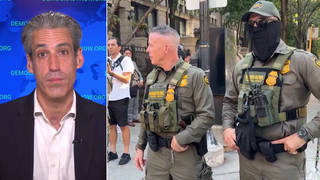
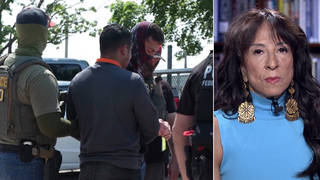
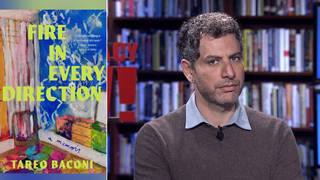






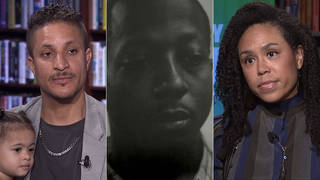
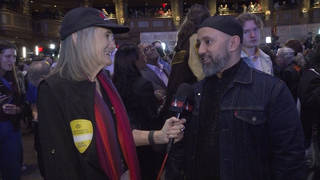
Media Options